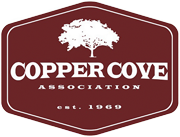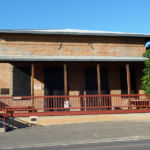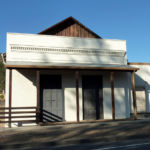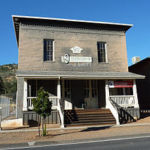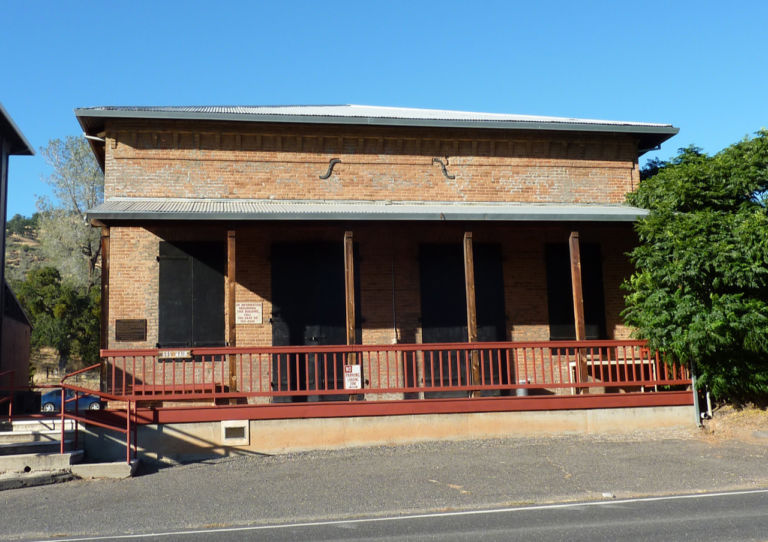Copperopolis, originally known as Copper Canyon was founded in 1860, at the site of the 2nd big discovery of copper ore in the area. William K. Reed, Dr. Allen Blatchly, and Thomas McCarty discovered a rich claim they later called the Union, and within 1 year, it was producing vast amounts of copper ore. Before long several other claims had been established, including the Keystone, Consolidated, Empire, Webster, Kentucky, and the Calaveras. All located in the now famous Copper Canyon district, the claims, and the men they employed, together with the businesses needed to provide for the miners’ needs, are what formed Copperopolis.
On August 3, 1860, a mining district was organized, and mining laws adopted, allowing each miner to file 1 claim on a vein 150′ in length and 300′ wide. Any miner discovering a new claim was entitled by law to an extra claim of the same extent. The town grew rapidly, enjoying great prosperity between 1860 and 1867. The center of town, called “The Plaza” was located across from the Armory. From there, main street runs about 1 1/4 miles northwest to the end of town, paralleling the rich copper vein.
During the copper boom, main street was lined with buildings of all shapes and sizes, offering the population just about anything they wanted. Many of the buildings were constructed of bricks hauled in from Columbia, where the buildings there were being torn down so the miners could mine the ground underneath.
Copperopolis and the Civil War
Copperopolis has a rich history and even played a role in the Civil War for the Union Army. It provided most of the metal needs for the Union Army during that war. Located out of Stockton, the copper lode was first discovered by two prospectors at about the same time in 1860. During the war years, Copperopolis had a population of 10,000, much larger then any of the nearby gold camps. At the end of the war, the price of copper dropped to 19 cents a pound compared to 55 cents during the war. This forced closure of many of the mines and population dwindled. It did, however, provide copper during the two world wars.
Copperopolis owed much of its prosperity to the Civil War, as huge amounts of copper were needed for shells and bullets. Getting the copper to the Union forces was a very difficult task. In 1863, William Reed built a toll road over which oxen teams hauled $1.6 million in copper ore that 1st year. The ore was taken to Stockton, shipped downriver to San Francisco, put on sailing ships and taken around Cape Horn, where they finally arrived at smelters in Boston, NY, and Philadelphia.
Copper then became available for use by the Union Army. The war also generated lots of publicity for Calaveras County, as the region which also included Telegraph City, and Campo Seco, became the 2nd largest copper producing district under northern control during the Civil War. By 1870, the population was down to 170, but during the 1880’s, it sprang some-what back to life. A Boston conglomerate bought the Union and Keystone mines, and they became active once again. The mines of Copperopolis continued to produce over the years, with boom periods occurring during the 2 World Wars. The Bureau of Mines credited the mines with 72,598,883 pounds of copper from 1861 to 1946, over $12 million worth of copper. Copperopolis may not have been a gold town, but it was definitely a mining town. The mines, remaining buildings, cemeteries, etc., are interesting to wander around.
When President Abraham Lincoln was assassinated a special memorial service was held in the History Copperopolis Church pictured on these pages. It is now the home of Crossroads Church.
Mark Twain and Copperopolis
Copperopolis is famous for the shack on Jack Ass Hill, where Mark Twain is supposed to have written one of his most famous works, “The Celebrated Jumping Frog of Calaveras County”. Author K. Martin Gardner expounds on this literary history, and Twain’s friendship with renowned scientist of the time, Nikola Tesla, in his novel Copperopolis.
